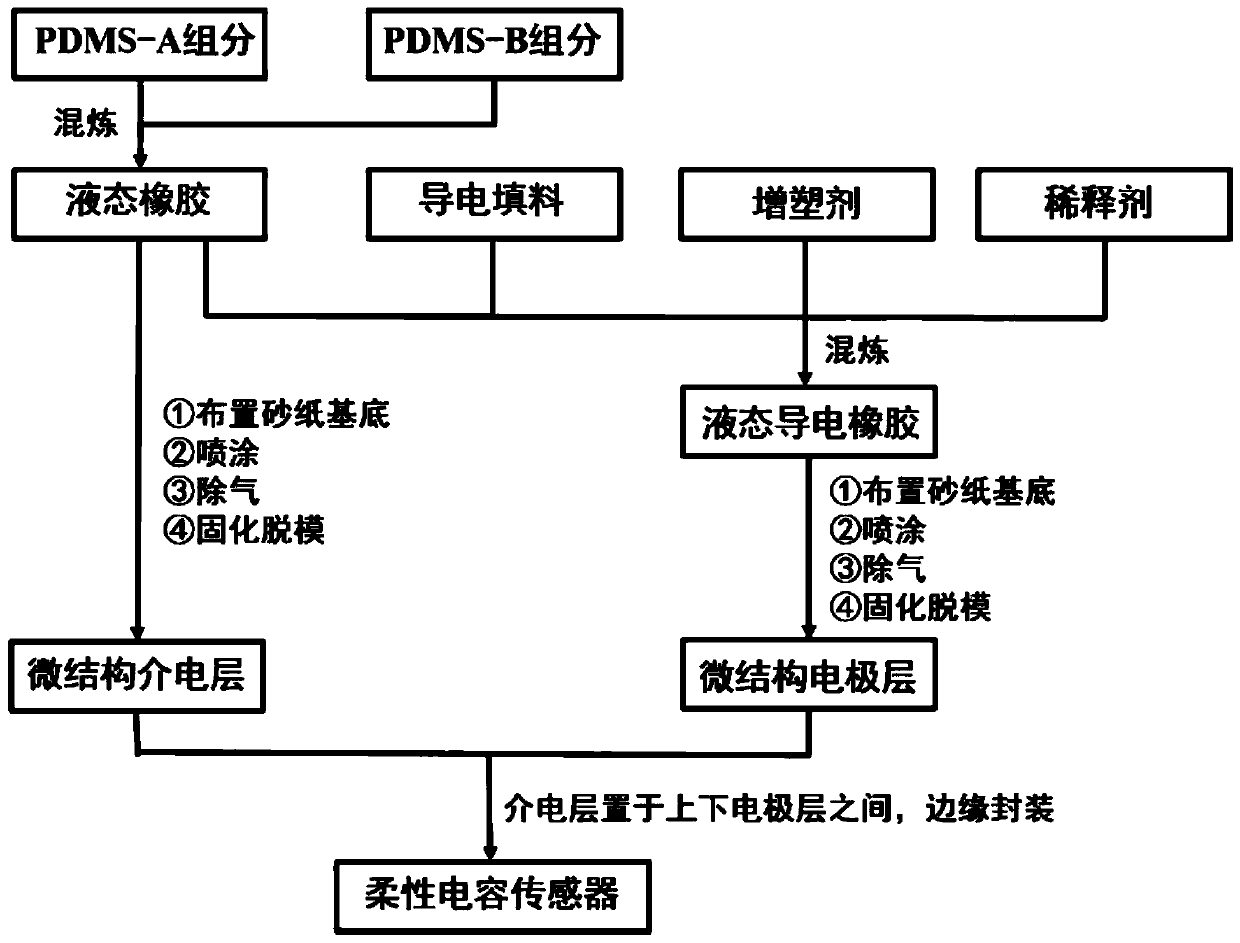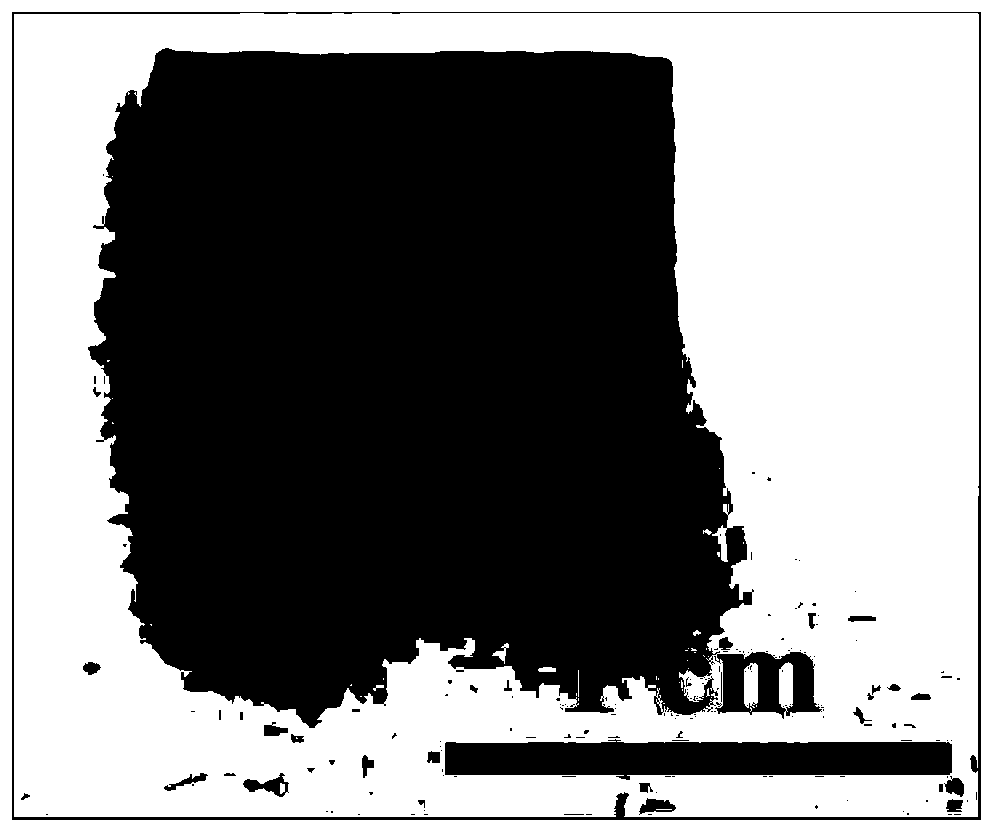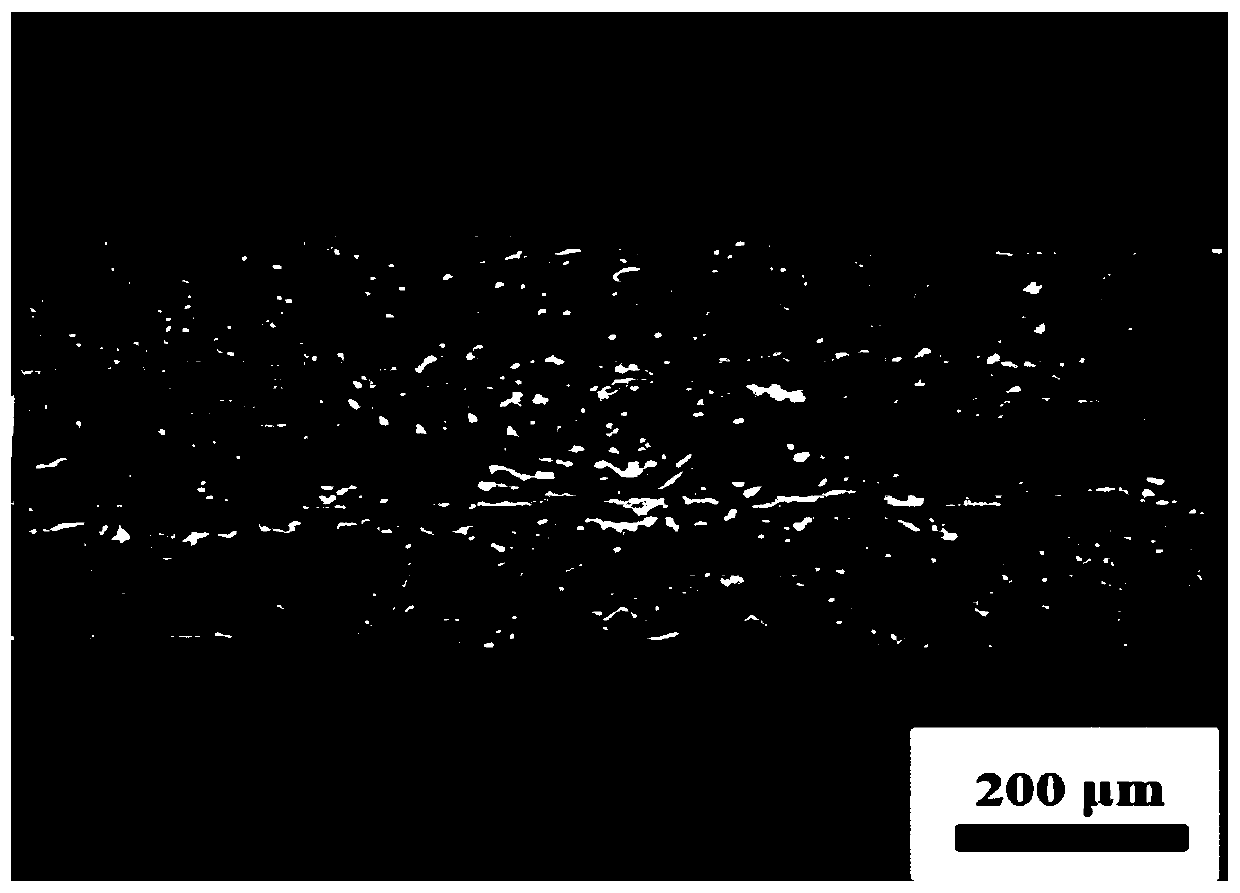Preparation method of capacitive flexible sensor
A flexible sensor and capacitive technology, which is applied in fluid pressure measurement, instruments, and measuring devices using capacitance changes, can solve the problems of cumbersome steps, poor stretchability, and high cost, and achieves a wide range of applications and high preparation efficiency. , the effect of simple process
- Summary
- Abstract
- Description
- Claims
- Application Information
AI Technical Summary
Problems solved by technology
Method used
Image
Examples
Embodiment 1
[0048] The pure silicone rubber formula used as the dielectric layer of the capacitive sensor is a mixture of 90wt% A-component PDMS base rubber and 10wt% B-component PDMS curing agent, and the viscosity after mixing is 3485mPa s; the conductive rubber used as the electrode layer of the capacitive sensor The formula is 45wt% A component PDMS base glue, 5wt% B component PDMS curing agent, 25wt% conductive filler carbon fiber, 5wt% plasticizer 1.2-propylene glycol and 20wt% diluent simethicone oil are added and mixed in order, after mixing The viscosity is 1469mPa·s. Prepare according to the following steps: ①Preparation of dielectric layer, put liquid pure silicone rubber into the spray gun, spray it on the sandpaper with surface roughness Ra of 48.6μm under the pressure of 0.7MPa, and further carry out vacuum under the environment of -0.1MPa Degassing for 10 minutes, and finally placed at 150°C for 5 minutes to cure and form; ② Electrode layer preparation, put the liquid condu...
Embodiment 2
[0051]The pure silicone rubber formula used as the dielectric layer of the capacitive sensor is a mixture of 88wt% A-component PDMS base rubber and 12wt% B-component PDMS curing agent, and the viscosity after mixing is 3367mPa s; the conductive rubber formula used as the electrode layer of the capacitive sensor 40wt% A-component PDMS base glue, 10wt% B-component PDMS curing agent, 20wt% conductive filler carbon fiber, 10wt% plasticizer 1.2-propylene glycol and 20wt% thinner dimethyl silicone oil were added and mixed in order, and the viscosity after mixing It is 1429mPa·s. Prepare according to the following steps: ①Preparation of the dielectric layer, put the liquid pure silicone rubber into the spray gun, spray it on the sandpaper with the surface roughness Ra of 22.0μm under the pressure of 0.7MPa, and further vacuum it under the environment of -0.1MPa Degassing for 10 minutes, and finally placed at 150°C for 5 minutes to cure and form; ② Electrode layer preparation, put the...
Embodiment 3
[0054] The pure silicone rubber formula used as the dielectric layer of the capacitive sensor is a mixture of 90wt% A component PDMS base rubber and 10wt% B component PDMS curing agent, and the viscosity after mixing is 3647mPa s; the conductive rubber formula used as the electrode layer of the capacitive sensor Add and mix 50wt% A component PDMS base glue, 5wt% B component PDMS curing agent, 25wt% conductive filler carbon fiber, 10wt% plasticizer 1.2-propylene glycol and 10wt% thinner simethicone oil in order, and the viscosity after mixing It is 1294mPa·s. Prepare according to the following steps: ①Preparation of the dielectric layer, put the liquid pure silicone rubber into the spray gun, spray it on the sandpaper with the surface roughness Ra of 31.7μm under the pressure of 0.7MPa, and further carry out vacuum under the environment of -0.1MPa Degassing for 10 minutes, and finally placed at 150°C for 5 minutes to cure and form; ② Electrode layer preparation, put the liquid ...
PUM
| Property | Measurement | Unit |
|---|---|---|
| Viscosity | aaaaa | aaaaa |
| Surface roughness | aaaaa | aaaaa |
| Viscosity | aaaaa | aaaaa |
Abstract
Description
Claims
Application Information
 Login to View More
Login to View More - R&D
- Intellectual Property
- Life Sciences
- Materials
- Tech Scout
- Unparalleled Data Quality
- Higher Quality Content
- 60% Fewer Hallucinations
Browse by: Latest US Patents, China's latest patents, Technical Efficacy Thesaurus, Application Domain, Technology Topic, Popular Technical Reports.
© 2025 PatSnap. All rights reserved.Legal|Privacy policy|Modern Slavery Act Transparency Statement|Sitemap|About US| Contact US: help@patsnap.com



